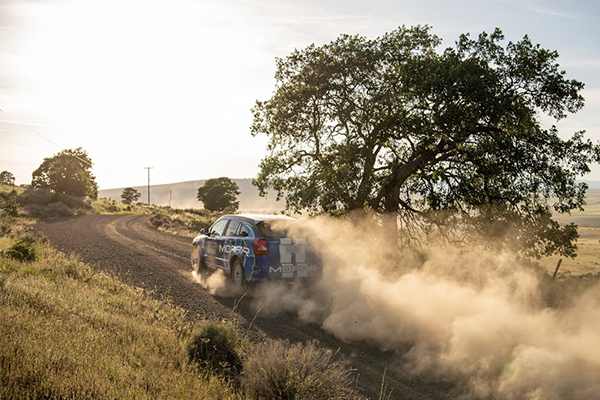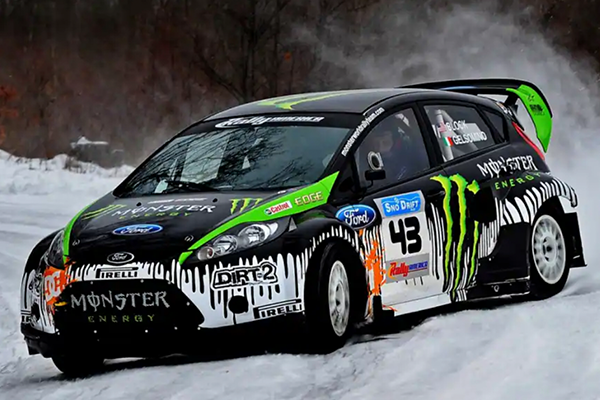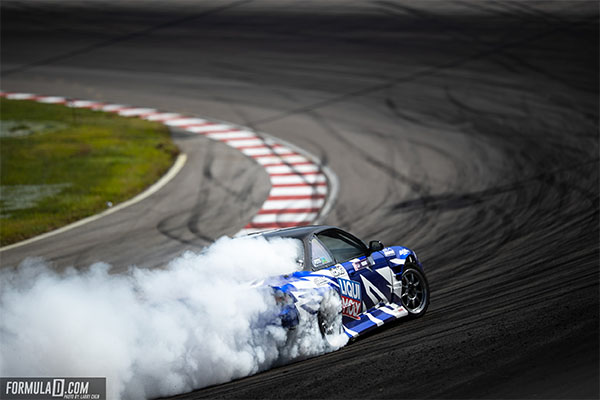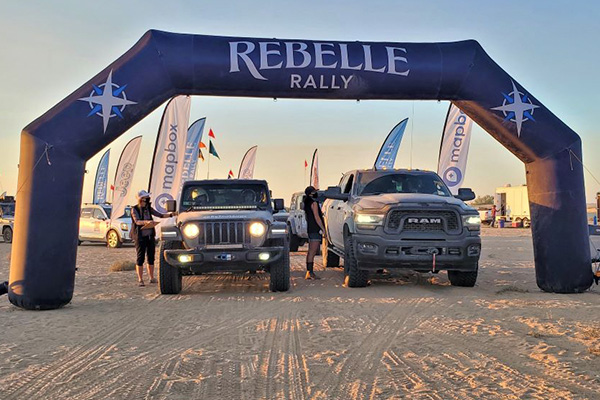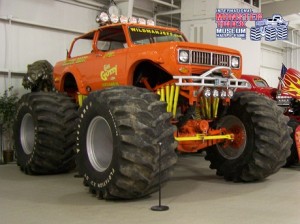
Shotgun Harry. Photo credit: International Monster Truck Museum.
“A monster truck is fascinating because it can go anywhere—and over anything in its path. Here are trucks that typically weigh 10,000 pounds or more, jumping 25 to 30 feet in the air and performing long jumps upwards of 200 feet. This defies expectations, gravity, and the laws of physics.” (Jeff Cook, President and Founder of the International Monster Truck Museum & Hall of Fame)
If you're a diehard fan, then names Allen Pezo, Dan Patrick, Scott Stephens, Gary Porter and Army Armstrong may ring a bell, especially as each was inducted into the International Monster Truck Museum’s Hall of Fame on November 9, 2013--during its third annual induction ceremony. Pezo had the most votes, while Stephens and Porter tied for second.
The International Monster Truck Museum (IMTM) & Hall of Fame was created in 2010 with the “mission of collecting and archiving the history of the monster truck sport and related aspects of the high performance aftermarket, focusing upon capturing history from the surviving pioneers and legends.” Each year, the IMTM will also honor accomplished people who contribute significantly to monster trucks by inducting them into the hall of fame.
This museum is different from many others in that, although it does house early versions of monster trucks, it is also recording “history” as it happens, archiving photos and data of modern trucks – rather than waiting 25 years and then seeking out the information. Here’s the breakdown:
Typically, there are three to four classic monster trucks on display at any given time in the museum, along with memorabilia and other historical items. Meanwhile, the website contains excellent resources, including a monster database of vehicles and relevant info surrounding each vehicle; here are three examples:
• Aaron’s All-American Dream Machine, a vehicle that set a world speed record of 96.80 mph in March 2012
• King Kong, belonging to Jeff Dane, one of the sport’s early celebrities
• Bob Chandler’s Bigfoot, the original car crusher
The site also includes driver profiles and loads of photos.
How it all got started
“Really,” Jeff Cook says, “one thing just led to another. There is a large museum complex in Auburn, including the National Military History Center, and the founder is a friend of mine. I was visiting him one day when he asked me if there was a museum yet for monster trucks and I said ‘no.’ We weren’t sure if we could pull one off but we got together with others in the industry and we were successful.”
“We have some early trucks in the museum,” Jeff adds, “which are now the dinosaurs of the racing world. They started out big and heavy, with real pickup bodies, as people competed to have the biggest truck on the block.”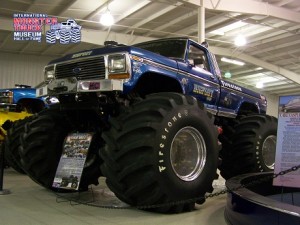
Bigfoot. Photo credit: International Monster Truck Museum.
And, just as “one thing led to another” in the creation of the IMTM, one thing led to another in the development of monster trucking itself. Here’s what happened.
Early days of monster trucking
No one sat up one day and decided to invent a monster truck. Instead, people gradually began modifying their pickup trucks and competing in truck pulling and mud bogging events. This then evolved into competitions (informal and then more formalized) to create the biggest truck.
People and trucks (with 48-inch-in-diameter wheels) that rose to attention included:
• Bob Chandler: Bigfoot
• Everett Jasmer: USA-1
• Fred Shafer and Jack Willman, Sr.: Bear Foot
• Jeff Dane: King Kong
Not surprisingly, all of these men – along with Dan Degrasso – were in the first group to be placed in the IMTM’s hall of fame.
In April 1981, Chandler used Bigfoot to drive over and crush cars, planning to use the results as a promotional tool for his business. He then repeated the performance in the Pontiac Silverdome in 1982; this time, the vehicle had tires of 66 inches in diameter. Around this time, the phrase “monster truck” was born. As other people began using 66-inch tires on their vehicles, the vehicles themselves became heavier, ranging from 13,000 to 20,000 pounds each, with super-sized suspension.
Was Chandler the first to perform the car crushing feat? It depends upon whom you ask. Some cite Dane as the first, late in the 1970s, while others believe someone else entirely was the first. What is true is that Chandler has the earliest video and that the Monster Truck Racing Association recognizes him as the first to perform this stunt.
In 1985, monster truck racing began, typically single-elimination races on obstacle courses. As people began to race, the heaviness of early monster trucks worked against them, so they began strategizing over how to lighten their loads and to boost their power, using fiberglass for truck bodies. In 1989, Jack Willman created a vehicle that only weighed 9,000 pounds, a significant reduction.

Bigfoot. Goliath. Photo credit: International Monster Truck Museum.
Monster Truck Racing Association
The Monster Truck Racing Association (MTRA) formed in 1988, setting safety standards. “We pride ourselves on being the safest motor sport, considering the number of events, for both participants and spectators,” says Marty Garza, director of communications for MTRA. “I credit that to the foresight of people in the association who proactively brainstorm for solutions for potential problems, rather than being reactive after an issue has happened. We risk being called alarmists, but we have a safety record that is unmatched.”
Five years later, in 1993, freestyle exhibitions began to appear at racing events for drivers to show off their fancy moves; in 2000 freestyling became a competition event. “Part of the appeal of monster trucks,” says Marty, “is the unpredictability of the sport. Freestyling, for example, brings with it an X Games type of excitement. The height of the trucks, the amount of noise that monster trucking creates – well, it just appeals to the senses as it’s shockingly loud and highly energizing.”
Who are the fans?
Monster Truck Racing Association Online stated in 2010 that more than a million people attend monster truck events annually, with demographics matching those of people who buy pickup trucks. That makes perfect sense.
Then, according to Media Life Magazine in 2010: “Motorsports do bring in some moms and kids, but the majority of attendees are young male gearheads. The crowds are roughly two-thirds male, and more than 75 percent are age 44 or younger.”
Later in the article, though, a statistic shows greater female enjoyment of the events; according to Scarborough Research, when looking at adults who have attended a monster truck event within the past 12 months:
• 57% are males
• 43% are females
Wondering about ages?
• 22%: ages 18-24
• 28%: 25-34
• 27%: 35-44
• 15%: 45-54
• 6%: 55-64
• 2%: 65+ Income?
• 15%: below $25,000
• 22%: $25,000-$39,000
• 11%: $40,000-$49,000
• 17%: $50,000-$74,999
• 15%: $75,000-$99,999
• 12%: $100,000-$149,000
• 8%: $150,000 and up
Jeff Cook brings up another point about demographics: that children also attend monster truck events. “You see grandparents, parents and kids,” he says. “Events tend to be family oriented in that you see all ages and everyone seems to get something out of it.”

Predator. Photo credit: International Monster Truck Museum.
In fact, Jeff himself was one of those kids who was fascinated by big vehicles. “I was always wanting to put bigger tires on my toys,” he says, “and then I saw Bigfoot. I told my father that I wanted a truck like that someday and that I thought we should build one. Videos just don’t do monster trucks justice. You need to see them in action, in person, to see these massive vehicles going 60 to 80 mph as they do their stunts."
The future of the sport
“All of this attention to monster trucks has boggled our minds. Ten to fifteen years ago, it seemed like nobody even knew what a monster truck was. We thought attention to events would slow down and top out, but people continue to get more and more performance out of their vehicles, with better technology and bigger stunts.
In other racing sports, vehicles are fragile, but monsters are durable. They can roll over, crash – and then keep going. So the drivers keep pushing the envelope, running it to the edge, especially since fiberglass truck bodies of today can be fixed much more easily. Monster truck racing, though, is still more of a bragging rights race. I think it will someday turn into racing for money, with more racing series and more corporate sponsors.” (Jeff Cook)

